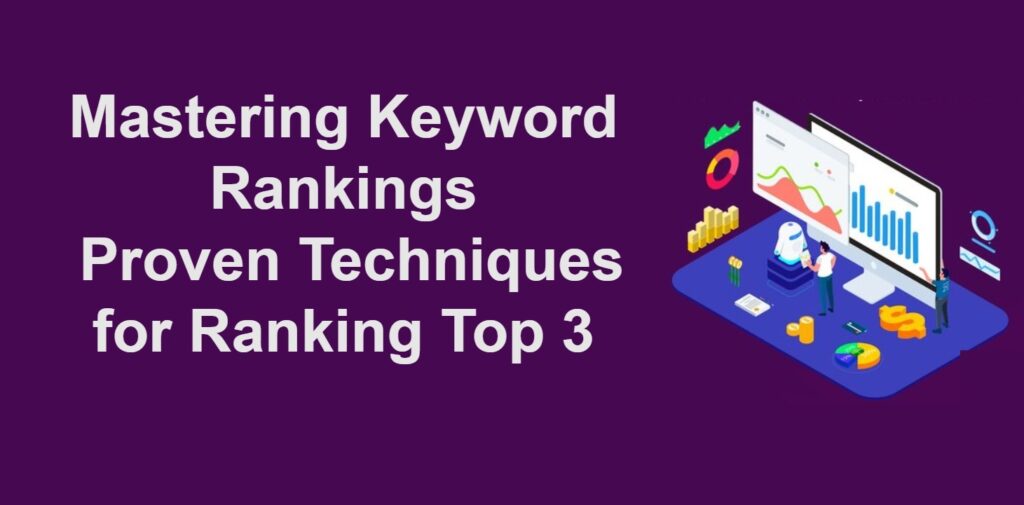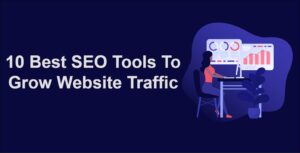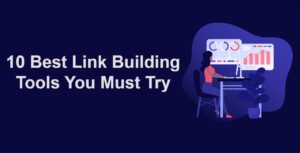80% of internet users never go further than the first results page.
Ranking a website on the first page of Google search results for a given search term requires specific plans and strategies. In this article, we will guide you on how to get higher rankings on Google.
Furthermore, these tips below will drive compounding traffic growth to your website.
How to Rank for a Keyword in 6 Easy Steps
Ranking keywords in Google search results is a multifaceted process that depends on various factors.
Here are some key factors that influence keyword rankings in Google:
- On-Page Optimization
- Page loading
- keyword relevance or Search intent
- Search volume
- Quality of the content
- Number of backlinks
- Domain authority
Step 1: Improve Your On-Site and Technical SEO
Website loading time
It doesn’t matter what platform you use for your website or which theme you are using. Your website loading time decides your SEO rankings. Google gives top priority to sites that load faster.
Google focuses on providing search results with a great user experience. That said, it places the web pages in first page results that load quickly.
On-Site and Technical SEO are essential for optimizing a website’s performance in search engines. On-site SEO focuses on content, user experience, and on-page elements. At the same time, Technical SEO deals with the website’s technical infrastructure, ensuring search engines can crawl and index the site effectively.
| Aspect | On-Site SEO | Technical SEO |
|---|---|---|
| Keyword Optimization | – Keyword research and selection | – XML sitemap |
| – Keyword placement in content | – Robots.txt file | |
| – Title tags and meta descriptions | – Canonical tags | |
| – Header tags (H1, H2, etc.) | – Redirects (301, 302) | |
| Content Quality | – High-quality, informative content | – Crawlability and indexability |
| – Unique and engaging content | – HTML and XML sitemaps | |
| – Content relevance to user intent | – Site structure and navigation | |
| – Avoidance of duplicate content | – HTTP vs. HTTPS | |
| User Experience | – Mobile responsiveness | – Site speed and performance |
| – Page load times | – Mobile-friendliness | |
| – Website structure and navigation | – Structured data markup | |
| Internal Linking | – Internal linking for user navigation | – XML sitemaps |
| – Anchor text optimization | – Canonicalization | |
| – SEO-friendly URLs | – Website security and SSL | |
| Images and Multimedia | – Image optimization (ALT tags, file size) | – Image optimization |
| – Multimedia (videos, infographics) | – Video and multimedia optimization | |
| Social Integration | – Social sharing buttons | – Social media markup |
| – Rich snippets for social media sharing | – Social media integration | |
| Local SEO | – Local keywords and citations | – Google My Business optimization |
| – NAP consistency | – Local citations and directories | |
| – Google My Business profile | – Schema markup for local SEO | |
| Content Updates | – Regular content updates | – XML sitemaps |
| – Fresh, up-to-date information | – Crawl budget optimization | |
| – Blog posts and news sections | – Regular content updates | |
| User Intent | – Content aligned with user intent | – Understanding user intent |
| – Satisfying user search queries | – Providing relevant content | |
| – Clear call-to-action (CTA) | – User-friendly navigation | |
| Structured Data | – Schema markup for rich snippets | – Structured data markup |
| – Structured data for products, events, etc. | – Data markup for rich snippets |
Step 2: Keyword research Start Using Long Tail Keywords
Start with long-tail keywords on your blog posts to rank your keyword quickly. Long-tail keywords are more specific and targeted than generic terms.
Long-tail keywords are less competitive, mix up naturally with the content, and are easier to rank in Google search results.
You should follow a structured process to begin using long-tail keywords, which are more specific and often have less competition.
Start by brainstorming topics related to your content or business. Then, use keyword research tools like Google Keyword Planner, SEMrush, or Ubersuggest to find long tail keywords associated with those topics. Pay attention to search volume, keyword difficulty, and user intent to select your content’s most relevant long-tail keywords.
Integrating these specific phrases into your content and optimizing your website can attract more targeted traffic and improve your SEO performance.
Step 3: Write High-Quality Content
You must publish high-quality content to rank in Google’s first-page results. A high-quality content answer for the searcher’s query is comprehensive, contextual, and helpful to the audience with accurate information.
Create Eye-Catching & Engaging Titles – Title tags determine the page you want to rank for and the first thing users see in search results.
The title tags are the most crucial SEO component of a webpage. The best practice is to create proper title tags are adding keywords in the title and making them eye-catching and
Write your sentences in clear, shorter small paragraphs. Avoid longer blocks the shorter, the better. Choose the words that get people to stick around because you want people to stick around your content,
However, many people think their content is the highest quality out there. Also, think length matters a lot.
In fact, to get more organic website traffic in the long run, focus on writing detailed articles.
Step 4: Publish Your Content on Social Platforms
SEO ranking does not directly influence by Social media, whereas the links shared across social platforms increase brand exposure. And they also add up some influence on search engine optimization.
When your content is shared across different social platforms, it generates social signals that indicate. You must promote your content actively if you want people to link to your site.
Step 5: Build Backlinks to Your Site
Backlinks are considered votes by Google search algorithms. The more links you have for your web pages, the higher the rankings you will get for your keywords.
Make sure you write authoritative content that attracts more backlinks. In fact, earning high-quality backlinks is the most challenging part of SEO.
Otherside, Low-quality, spammy backlinks can damage your rankings and reputation. Hence focus on getting good quality backlinks.
In other words, quality matters as much as quantity regarding backlinks. While building the backlinks, you must understand a few critical aspects of backlinks strategy:
- Authority – The site must have an authoritative backlink profile, generate most of the traffic Organically, and even rank well in the SERPs themselves.
- Relevant – The referring website is from the same niche and tackles a similar topic. Then, it is considered relevant and considered a quality backlink.
- Natural – Backlinks must be acquired naturally, links can not be sponsored, and the referring page has a realistic number of links.
Domain Authority
Backlinks also help increase domain Authority which is an essential factor in keyword rankings. In fact domain, Authority is not a direct ranking factor for Google’s search engine algorithm.
You can check a detailed article on what domain authority is. And why you should consider improving your rankings. You can check here. A step-by-step guide to Increase Domain Authority of a site.
This image will show you the ink-building strategies that work best for me.
Step 6: Track and Monitor Your Results
Keyword monitoring involves monitoring and tracking the keyword’s positions in search results. By doing this, you can identify areas of improvement to increase rankings and, therefore, increase traffic to your site.
First, find out the position of your currently ranking keywords. Find out what you can do to improve your keyword ranking. Tracking you site search rankings is crucial to jumping up the search results.
Keyword Ranking Checking tools can help you to easily monitor all the keywords your webpage is ranking for, then taking further steps can help you improve further rankings.
How to Monitor Keyword Rankings With SEO Tools
This is easiest to do through an online keyword monitoring tool or rank tracking software – there are plenty of analysis tools, each with pros and cons. If you don’t know where to start, look at the keywords your competitors are ranking for so you stand a chance of competing alongside them.
Tools you can use to find the Keyword Rankings.
You need to use a few tools to rank higher for the keywords. Here I’m listing a few fantastic websites for checking your keyword ranks. All the following are free tools to find the keyword rankings for your websites.
#1. Moonsy keyword rankings checker
Moonsy tool helps you to check any keyword position in google ranking, you need to enter your keyword and domain name on the Moonsy tool, and you’ll be able to find the current rankings for that keyword.
It’s simple and easy to use.
Getting your keyword rankings on the first page requires a certain strategy. If you approach it correctly, your hard work will pay off.





